The Vatican Museums, with their immense collection, represent a fascinating journey through centuries of art and history. Here is a detailed guide to the ten works you absolutely cannot miss during your visit.
1. Laocoon Group
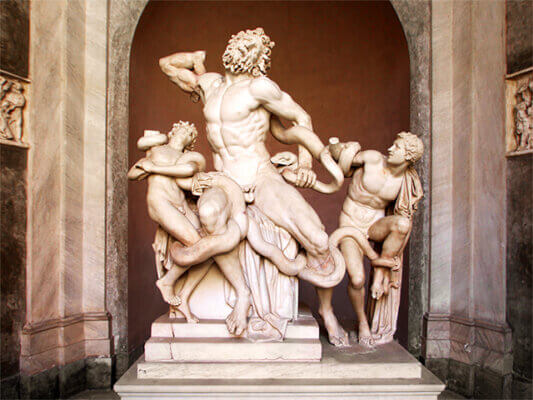
Discovered in 1506, this monumental sculpture depicts the Trojan priest Laocoon and his sons being attacked by sea serpents. This masterpiece, dating from the 1st century BCE, is an outstanding example of Hellenistic sculpture, praised for its drama and detail.
2. Sistine Chapel
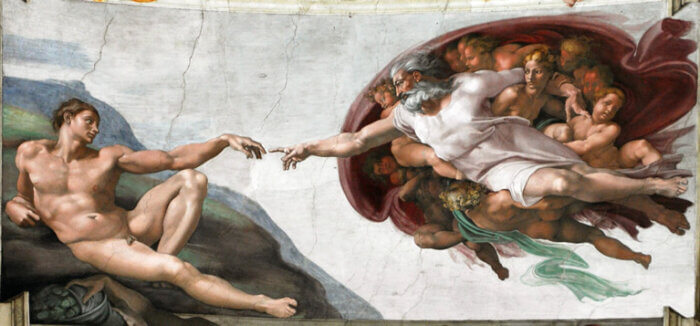
The Sistine Chapel is famous for its extraordinary frescoes by Michelangelo. The Creation of Adam, with the fingers of God and Adam almost touching, is one of the most iconic details in Western art. The Last Judgment, on the altar, offers a powerful depiction of Christ’s second coming and the judgment of souls.
3. Gallery of Maps
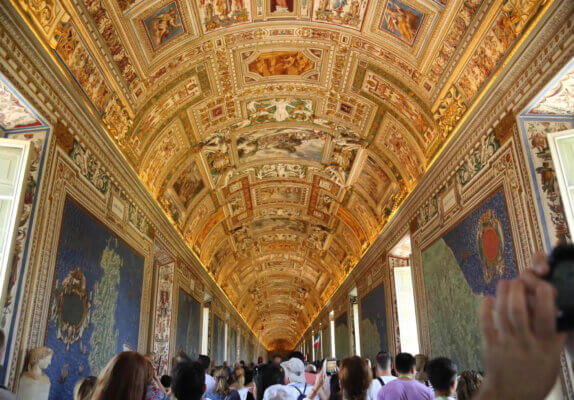
This 120-meter-long gallery is decorated with detailed maps of 16th-century Italian regions. Besides being an artistic marvel, these maps are a valuable historical record reflecting the geography and cartographic knowledge of the Renaissance.
4. Hall of Animals
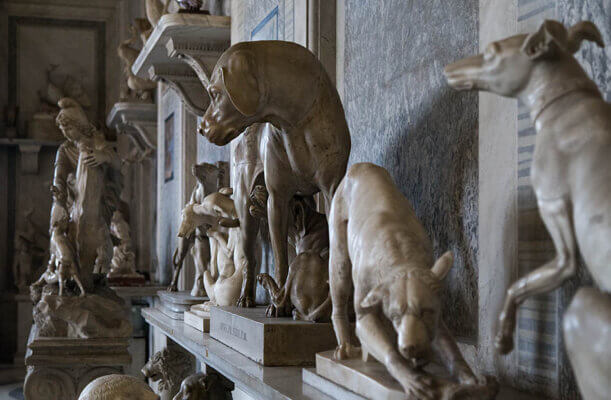
The Hall of Animals is a fascinating collection of sculptures representing animals and hunting scenes. The works are made of colored marbles that imitate natural hues, showing the mastery of ancient artists. These pieces not only demonstrate the beauty of nature, but also the skill of Roman sculptors.
5. School of Athens
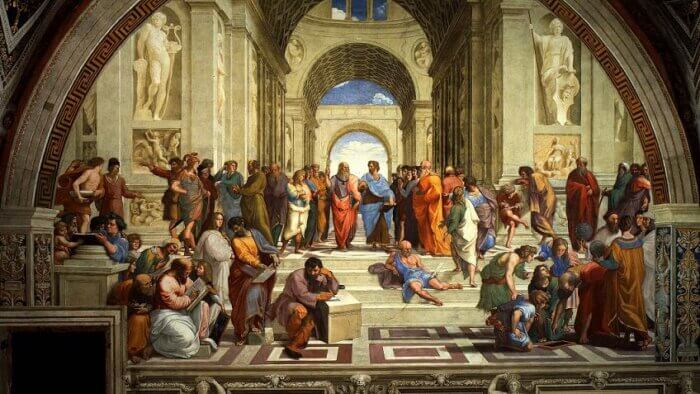
This fresco by Raphael, located in the Stanza della Segnatura, is one of the masterpieces of the Italian Renaissance. The work depicts the greatest philosophers of antiquity, such as Plato and Aristotle, in a grand architectural setting. The School of Athens is famous not only for its composition and perspective, but also for its intricate and symbolic details.
6. Hall of Muses
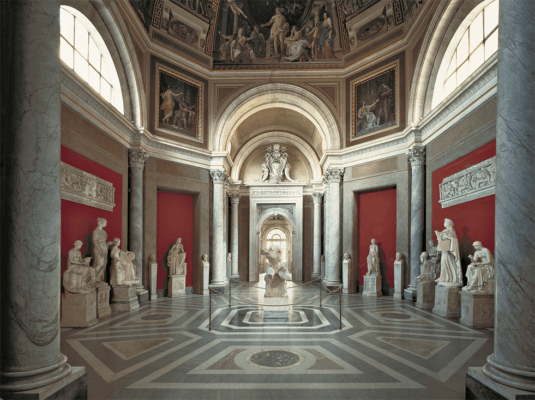
This room contains the famous Belvedere Torso and the statues of the Muses, which come from the Villa of Cassius. The Muses, mythological figures of the arts, are depicted with great elegance and grace, while the Belvedere Torso is admired for its detailed and dynamic anatomy.
7. Gregorian Egyptian Museum
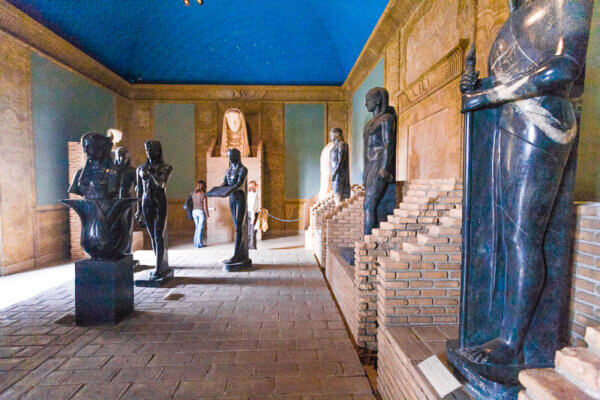
Founded in 1839, the Gregorian Egyptian Museum houses a vast collection of artifacts from ancient Egypt. Among the exhibits are statues, sarcophagi and papyri, which testify to the deep cultural ties between Rome and Egypt. This museum offers an in-depth look at Egyptian life, religion, and art.
8. Nile River Statue
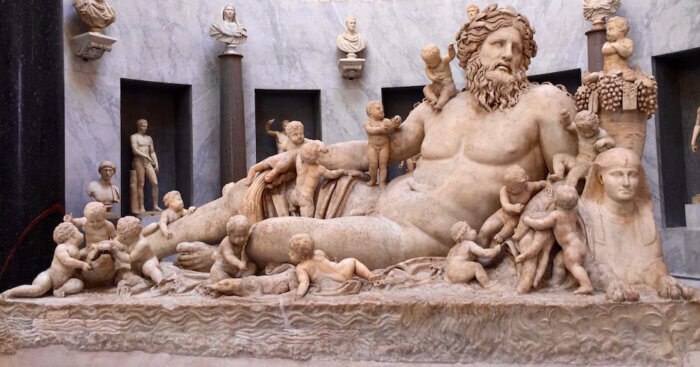
Located in the New Arm, this imposing statue depicts the Nile as a deity surrounded by 16 figures of children, symbolizing the 16 cubits of the river’s annual floods. The statue is an example of Roman art’s ability to blend naturalism and symbolism.
9. Courtyard of the Pine Cone
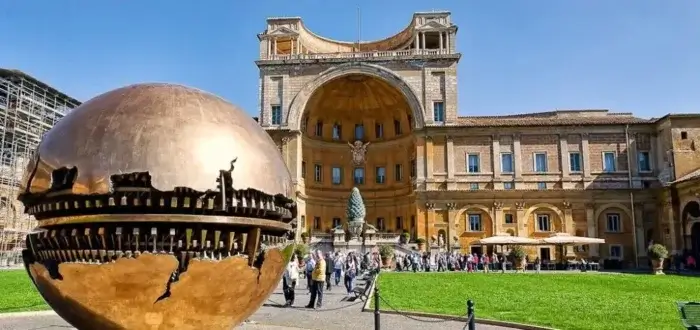
The Courtyard of the Pine Cone is named after the large bronze pine cone that dominates the space, a Roman-era work that originally decorated the Pantheon. Next to it is Arnaldo Pomodoro’s modern Sphere with Sphere, which represents the complexity and fragility of the world. This contrast between ancient and modern makes the courtyard a place of reflection and wonder.
10. Momo Helical Staircase
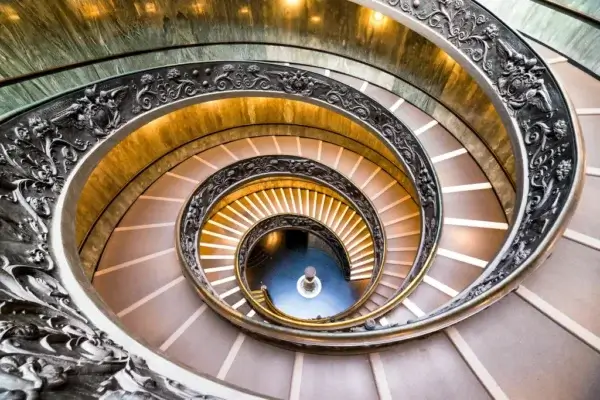
Designed in 1929 by Giuseppe Momo, this spiral staircase is one of the most iconic architectural attractions of the Vatican Museums. The staircase features a double ramp that never crosses, creating a unique and fascinating visual effect. Its innovative engineering and elegant design make it one of the most photographed staircases in the world.
Advice for the Visit
- Purchase Tickets and Skip the Line: It is strongly recommended that you purchase tickets online to avoid the long lines at the entrance to the Vatican Museums. This will allow you to save time and start your visit stress-free. You can take advantage of the tickets available on Getyourguide that also offer you priority queuing so you don’t have to wait in line.
- Visiting Time: Dedicate at least one full day to explore the Vatican Museums, as the vast collection requires time to be fully appreciated. Arriving early in the morning can help you avoid the larger crowds.
- Planning: Plan your major stops in advance to maximize your time and ensure you see all the most significant works. Use maps and guides available at the entrance to easily orient yourself within the museum complex.
- Guided Tours: Consider the option of a guided tour. Experienced guides can offer historical and artistic insights that will enrich your experience, allowing you to better understand the context and significance of the works on display.
- Pause and Refreshment: The Vatican Museums have cafeterias and refreshment areas where you can take a break during your visit. Take time to rest and reflect on the wonders you have seen before moving on.
- Attire: Remember that the Vatican Museums are part of Vatican City, so it is important to dress respectfully. Avoid overly casual or uncovered clothing to ensure hassle-free access.

